Modem Evaluation on Lines
Modems Tested
- Amati Overture 810
- Aware X200
- Netspeed Speedrunner
- Orckit FastInternet
- PairGain Megabit Modem 768
- PairGain Megabit Modem CRA
- PairGain Falcon DMT prototype
- Paradyne HotWire
- 3COM Viper
- Westell FlexCap2
Maximum Reach
Maximum reach of the
modems was tested by connecting the ADSL units to each of our lines and noting
whether the modem connected or not. In our trial, the lines happened to have
clustered around round number lengths - 5K, 10K, and 15K. Because of this, some
care must be taken in interpretation of these results - some modems may look
much worse than others when in fact they're close. We note however for our
purposes of a deployment that 15K feet reach is a minimum, so this was not a
significant limitation for us.
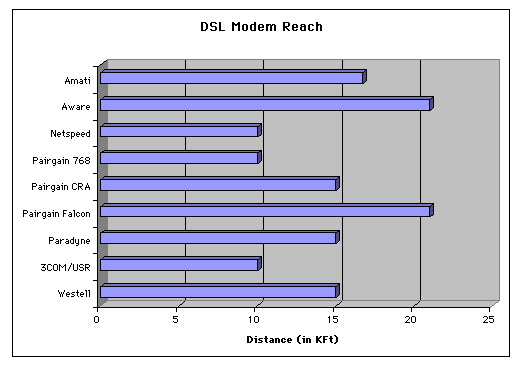
Throughput
Testing Methods
A number of prior tests have been done on ADSL equipment
using a variety of thruput testing methods. In general, these tests tend to be
done using existing network tools such as FTP and they tended to be
unidirectional. In this test, our goal was to stress the ADSL modems in a
bidirectional fashon. We wanted to have absolute control of the packet
generation including speed in each direction, packet size, and payload. The tool
we used that met these requirements was the Fluke
xDSL One Touch.

A Fluke
xDSL One Touch was connected to the ATU unit at each end of the line under test.
Test parameters for our test were as follows:
- 60 second tests
- Tested at or above negotiated rate
- 1518 byte packet size
- Pseudo-random data
It's important to note with these units that
you should not significantly overdrive the unit beyond what you expect for
thruput and the test should be run as long as possible. The reason for this is
that some units have internal buffers, and this can skew the results.
Example images while running an ADSL test using the Fluke xDSL One
Touch.
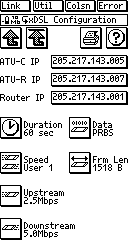
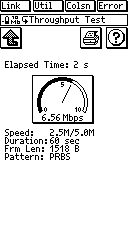
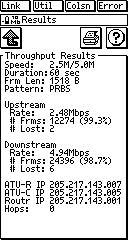
Modem Speeds at 5K feet
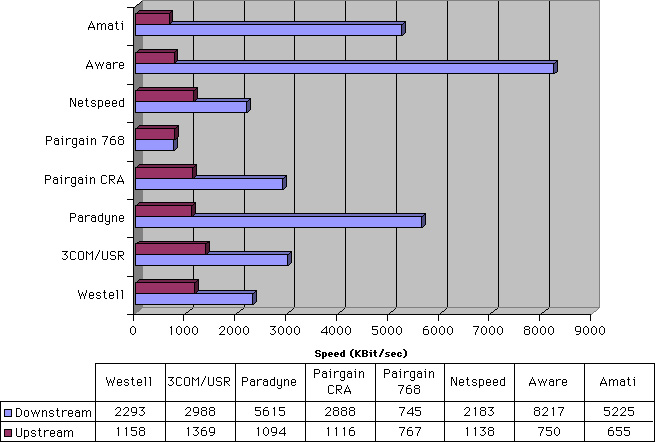
Modem Speeds at 10K feet
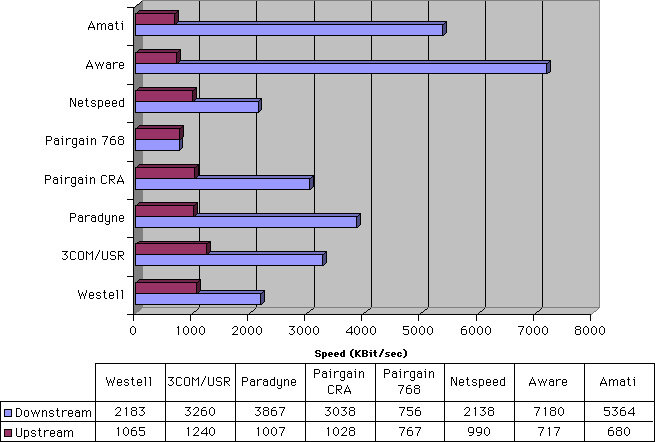
Modem Speeds at 15K feet
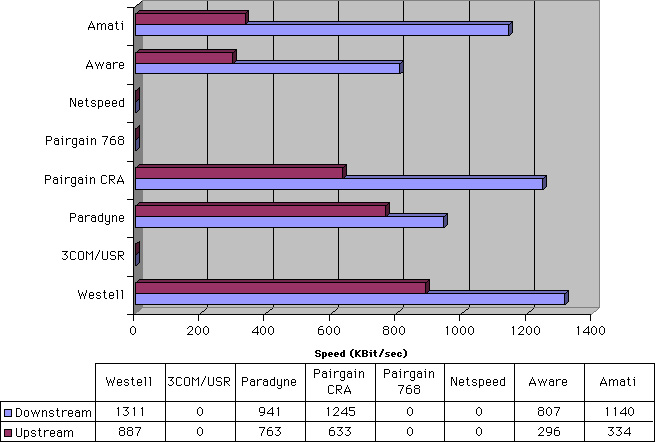
Reliability
Testing
We were interested in evaluating the modems for reliability. In
particular, we wanted to find out how often the ADSL modems would retrain.
Several of the ADSL modems running early firmware tended to do this, and we
wanted to find out if this existed after several updates. In this test, the
modems were deployed on a single loop of 5, 10, or 15K feet. Our test was using
a modified unix ping program. The measurement system at the POP was a unix based
system. At the remote end, we used the ATU-R management when available, and a
unix system for bridge-only products that lacked management. Test duration
during this experiment was 12-72 hours per line. The following table sumarizes
the results of this test:
| Modem |
5K |
10K |
15K |
| Amati |
0% |
|
0% |
| Aware |
0% |
|
1% |
| Netspeed |
0% |
0% |
|
| Pairgain 768 |
0% |
0% |
|
| Pairgain CRA |
0% |
0% |
|
| Pairgain Falcon |
|
0% |
0% |
| Paradyne |
0% |
|
0% |
| 3COM/USR |
0% |
0% |
|
| Westell |
0% |
|
0% |
There was no significant
packet loss with any of the modems.
Copyright (c)1998 Avalon Networks
Dave Lacey and Mike Lutz
To contact us check out the contacts page. 








